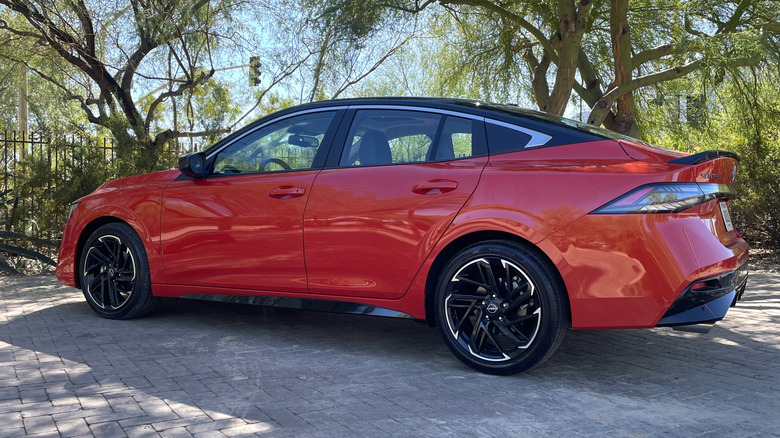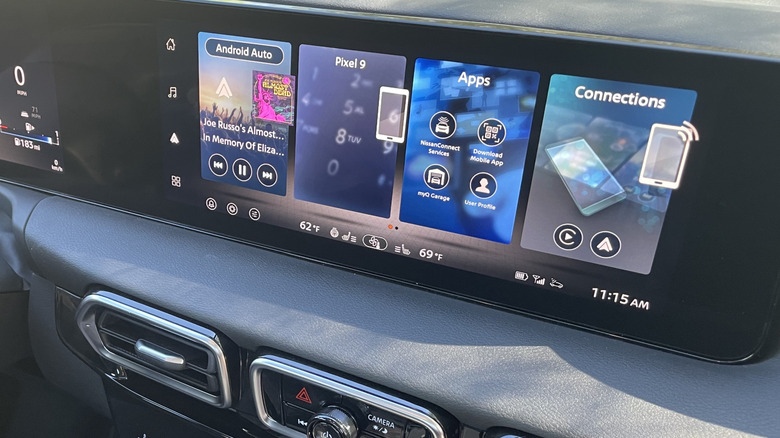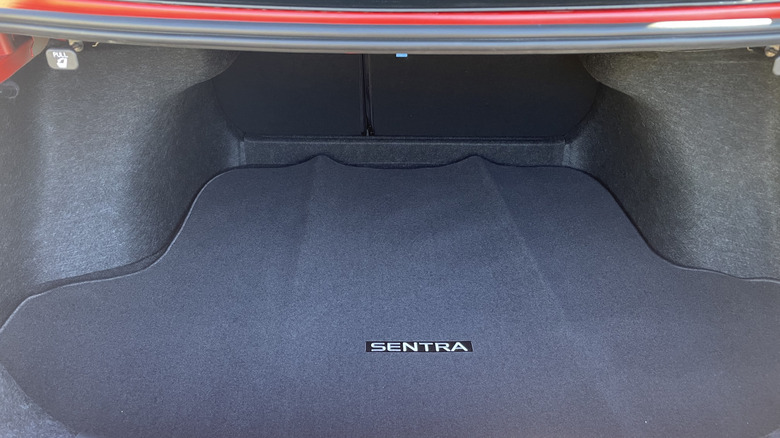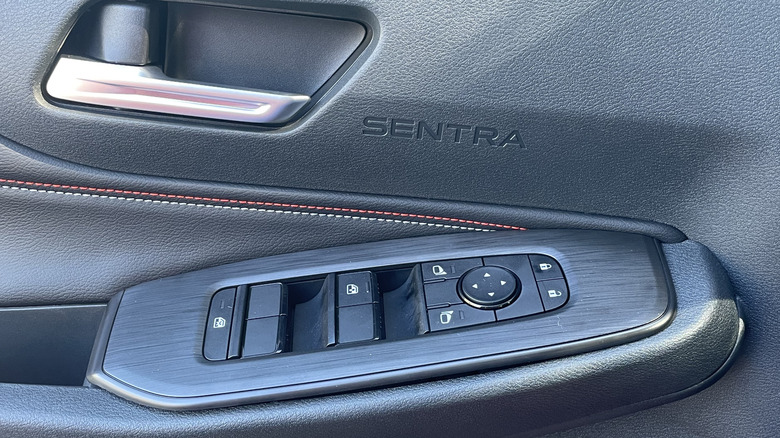The 2026 Nissan Sentra Is Cheap And Looks Great, But Driving It Raises Issues You Can't Avoid
One of my main takeaways from the redesigned 2026 Nissan Sentra is that I am the same age as the Nissan Sentra — we both entered this world in 1982 — and I could really use a full redesign right about now. It's not often I'm jealous of an entry-level compact car, but the hotel that served as home base for the Sentra drive program that Nissan invited SlashGear to was next door to the Phoenix Suns' practice facility, and the car got checked out by NBA players reportedly interested in whether or not a professional tall person would have enough legroom and headroom. I was running late to breakfast and supposedly missed this conversation by just a few minutes, and thus did not get to provide my expert opinion to my favorite species of male athlete.
For the purposes of this review, I bear no real grudge against the Sentra. It's an important car, for the Nissan brand as well as for shoppers in need of an affordable car. It's unapologetic about its frugality, but in a charming way, and proved an affable companion in a day of admiring one identical Phoenix metro subdivision after another.
Welcome to suburbia
Why Phoenix? Well, Nissan's engineering center is there, which sort of explains it. Plus, the Phoenix area is a sprawl of nearly identical strip malls connected by flat, parched highway ornamented with cacti and scrubby sagebrush. The area is revered, I'm told, for the hiking and nature opportunities within walking or biking distance of residential areas, and there were some lovely hills nearby, but most of our driving route was simple bordering on tedious.
I suspect the idea was to give us a day of driving that was as average as possible, without taxing the Sentra's modest powertrain. It's not a performance car. It's not even a mildly sporty car in its current and recent iterations, and even Nissan doesn't pretend otherwise. I would have been mildly terrified pushing this car through mountain twisties. It's a car for getting through your day reasonably efficiently and affordably, and ii does that quite well. Furthermore, it looks pretty good while going about its ordinary day.
First impressions
Though the exterior is on the busy side, the 2026 Nissan Sentra has a nice profile with a sleek roofline. The chrome trim along the roof arch on our SR test car was a bit excessive for my taste, though it tied together nicely with the polished areas of the 18-inch two-tone wheels. The front lighting looks upscale, the puddle lamps are a thoughtful touch, and the rear end has a nice little upward flip thanks to the trim-exclusive trunk spoiler, which provides just the right amount of eye-catching contrast without implying a sportiness that's not delivered upon. The SR is the best-looking of the group, though I'm not convinced that it's worth the extra money over the value-packed SV.
Across the lineup, the Sentra is one of the most inexpensive new cars currently on the market, and Nissan says its price structure was designed to make it an alternative to buying a used car, just as much as competing with other new vehicles at this price point. Nissan says a "fully loaded" Sentra will come in under $30,000, even after destination and handling, but the math is a little fuzzy — Nissan is including packages toward the "loading" but not individual options.
The Sentra SR we tested had a "sample" window sticker (which may or may not been for the actual car we drove) with a total price just under $32,000 despite a base price of $25,000. The Sentra was significantly more attractive through the lens of the sub-$30k messaging than after I discovered it was indeed possible to make the Sentra cost nearly as much as an Acura Integra.
A busy interior with some worthy tech upgrades
Since the Sentra's powertrain is consistent across the lineup, the trim level differences are most apparent in the cabin. The cockpit is on the busy side, which makes sense if the entire point of the Sentra is, "Look at how much stuff you get!" The S ($22,400) gets a single 12.3-inch screen and wired Apple CarPlay and Android Auto. Skip it, and pay just $770 more for the SV, which gets a pair of 12.3-inch displays and wireless smartphone integration.
I actually prefer wired phone connectivity for reasons that aren't important or exclusive to the Sentra, but the upgraded infotainment setup is well worth the money. It's nicely integrated into the dash, looks expensive, and was pretty easy to navigate. I especially liked that there's a physical button to switch between front and surround camera views, rather than needing to scroll through infotainment menus.
If you're determined to spend more on a Sentra, you're in luck. The SR, which we tested for this review, starts at $25,000 and adds the option of a two-tone exterior plus the aforementioned chrome trim, 18-inch alloys, and trunk spoiler. Inside, it adds wireless charging and red accent stitching on the black upholstery; heated front seats, a heated steering wheel, 64-color ambient lighting, and a smart key with automatic lock/unlock can all be added for just $990. The top SL starts at $27,990 and includes LED signature rear lighting, quilted upholstery with a two-tone gray and blue interior color palette, Bose audio, a surround-view camera system, and Nissan's ProPilot Assist package of driver-assistance tech, which is newly available for 2026.
Nobody will mistake a Sentra for a sports sedan
Let's be clear, no one is pretending the Sentra is breaking any ground in terms of performance. In fact, the press briefing before our test drive completely skipped over any mention of its engine or specs, suggesting that the Sentra is aimed squarely at buyers who largely prefer not to consider such factors at all when shopping for a new car.
The Sentra carries over its powertrain from the previous generation, a 2.0-liter four-cylinder engine rated for 149 horsepower and 146 pound-feet of torque, driving the front wheels via CVT. The ensemble was sluggish at best then; it feels even more antiquated now. On the upside, Nissan claims fuel economy ratings of up to 33 mpg combined. Furthermore, Nissan says that NVH (noise, vibration, and handling) are much improved compared to the previous generation.
Acceleration, of a sort
Of the Nissan Sentra's most direct competitors, it's true that these entry-level cars generally have comparable horsepower and torque ratings in the quest for affordability. Frankly, though, the Sentra feels slower than most.
It takes off from a stop with all the urgency of my five-year-old being sent to his room for a time-out. It feels like it's being drafted along in the flow of traffic rather than moving on its own accord, akin to office drones piling into a crowded subway car — just let your fellow commuters do the work, and you'll get there eventually. Highway merging requires extra attention, advance planning, and perhaps divine intervention.
The Sentra features Eco, Normal, and Sport diving modes; Sport mode adjusts steering feedback, throttle response, and shift timing. The Sentra didn't feel much quicker in this mode, and that's not only because I'm skeptical that a change to "shift timing" on a CVT engineered to maximize fuel economy makes that much of a difference. However, there was a noticeable upgrade in steering feel — hard to say if it's worth it without an estimate of the price paid in fuel economy for using Sport mode.
Ride and handling are perfectly acceptable
As long as you're not in a hurry, there are plenty of reasons to like the Sentra. It's wicked comfortable, both in terms of seating and in road manners. Nissan's Zero Gravity seats are old news, but they're still unique in that they're about as comfortable as seats get at the Sentra's price point. One caveat is that my co-driver noted that the front seat's firm side bolsters might be too snug for some folks.
As previously mentioned, the course set out for our test drive was not particularly taxing, but just fine to mimic the daily routine of an average consumer. In this sense, the Sentra performs admirably. It's reasonably quiet and reasonably smooth, with only occasional bits of road noise. It would be excessive to overly praise the Sentra in this area, but it also showed minimal reason for criticism.
2026 Nissan Sentra verdict
The 2026 Nissan Sentra is built in Mexico and will be available at the end of 2025. The base Sentra S starts out at $22,400 (with the typical caution that Nissan's published pricing does not include the destination fee of $1,245), which makes the Honda Civic seem a little expensive by comparison. We recommend skipping this version and going straight to the SV, which starts at $23,170, and the additional $990 Convenience package is also worth considering. The Sentra SR starts at $25,000, and is available with about $3,600 worth of packages, still arguably a pretty good value relative to a used car, but at this price point, the competition gets tougher.
Here's a sampling of other vehicles that come well-equipped between about $25,000 and about $28,000. The Nissan Kicks, a subcompact crossover, is similarly short on power but is available with all-wheel drive, and also offers compelling packaging. The Toyota Corolla is comparably priced throughout the range and has a competitive feature set, and same with the Chevy Trailblazer and Buick Encore GX. The Kia K4 has a lower base price than the Sentra, but if you buy the top GT-Line Turbo for $28,090, you get an upgrade to a 190-horsepower turbo-four engine. By the time you load a Sentra, you should be casting a net wide enough to include the Toyota Prius, which is far more efficient despite having about 50 hp more.
While the top-tier SL is still a solid deal at $27,990, all things considered, the more you spend on a new Nissan Sentra, the less appealing the Sentra becomes.







